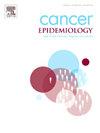Notification of locoregional breast cancer recurrence based on pathology reports: A nationwide validation study with the Netherlands Cancer Registry
IF 2.3
3区 医学
Q3 ONCOLOGY
引用次数: 0
Abstract
Background
Usually, data on locoregional recurrent breast cancer (LRR) are collected by reviewing all patient files of a specific cohort, despite only few patients actually have a LRR. We describe and validate a new procedure in which notifications of LRRs are obtained via pathology reports, which could improve efficiency.
Methods
Patients diagnosed with nonmetastatic invasive breast cancer between 2012 and 2016 were identified from the Netherlands Cancer Registry (NCR) and linked to the Dutch Nationwide Pathology Databank (Palga). LRRs were identified using a complex algorithm based on codes and text in pathology reports, whereafter only files from patients with a notification – i.e. patients who were suspected of having had a LRR – were consulted for confirmation and additional information.
To validate this procedure, patients diagnosed between January-March 2012 – of whom data on LRRs were previously collected manually by registrars from the Netherlands Cancer Registry – were used as the gold standard. Subsequently, patients with LRRs not notified by the new method were identified and original pathology reports and clinical reports were evaluated to find reasons for the lack of notification.
Results
In total, 88,257 patients were linked to Palga, and 5069 patients were labelled with a notification. In patients diagnosed between January-March 2012 (validation cohort, n = 3092), 270 patients were labelled with a notification. Of these patients, 82 (2.7 %) were diagnosed with a LRR. The notification method identified 63 patients (77 %) with LRRs.
Missed notifications were due to clinical diagnoses (not available in Palga, 53 %) or incomplete/incorrect pathological reporting (47 %). The notification method resulted in cost savings of €2.949.127,- as compared to the manual scenario.
Conclusion
Using the notification method, almost 80 % of the patients with LRRs were identified, with huge reductions in registration burden and costs. The incompleteness should be considered in future analyses. Improvement in pathology reporting could increase completeness.
基于病理报告的局部区域乳腺癌复发通知:荷兰癌症登记处的一项全国性验证研究
通常,局部复发性乳腺癌(LRR)的数据是通过回顾特定队列的所有患者档案来收集的,尽管实际上只有少数患者有LRR。我们描述并验证了一种新的程序,通过病理报告获得lrr的通知,这可以提高效率。方法从荷兰癌症登记处(NCR)确定2012年至2016年间诊断为非转移性浸润性乳腺癌的患者,并与荷兰全国病理数据库(Palga)相关联。使用一种基于病理报告中的代码和文本的复杂算法确定LRR,然后仅咨询通知患者(即怀疑患有LRR的患者)的文件以进行确认和补充信息。为了验证这一程序,2012年1月至3月诊断的患者(lrr数据以前由荷兰癌症登记处的登记员手动收集)被用作金标准。随后,对新方法未报告的lrr患者进行识别,并对原始病理报告和临床报告进行评估,寻找未报告的原因。结果共有88,257例患者与Palga相关,其中5069例患者被标记为通知。在2012年1月至3月诊断的患者中(验证队列,n = 3092),270例患者被标记为通知。在这些患者中,82例(2.7 %)被诊断为LRR。报告法确定63例(77 %)患者存在lrs。漏报是由于临床诊断(在帕尔加没有,53% %)或不完整/不正确的病理报告(47% %)。与手动方案相比,通知方法节省了2.949.127欧元的成本。结论采用通报法,近80% %的lrr患者被发现,大大减少了登记负担和费用。在未来的分析中应该考虑到不完整性。病理报告的改进可以增加完整性。
本文章由计算机程序翻译,如有差异,请以英文原文为准。
求助全文
约1分钟内获得全文
求助全文
来源期刊

Cancer Epidemiology
医学-肿瘤学
CiteScore
4.50
自引率
3.80%
发文量
200
审稿时长
39 days
期刊介绍:
Cancer Epidemiology is dedicated to increasing understanding about cancer causes, prevention and control. The scope of the journal embraces all aspects of cancer epidemiology including:
• Descriptive epidemiology
• Studies of risk factors for disease initiation, development and prognosis
• Screening and early detection
• Prevention and control
• Methodological issues
The journal publishes original research articles (full length and short reports), systematic reviews and meta-analyses, editorials, commentaries and letters to the editor commenting on previously published research.
 求助内容:
求助内容: 应助结果提醒方式:
应助结果提醒方式:


